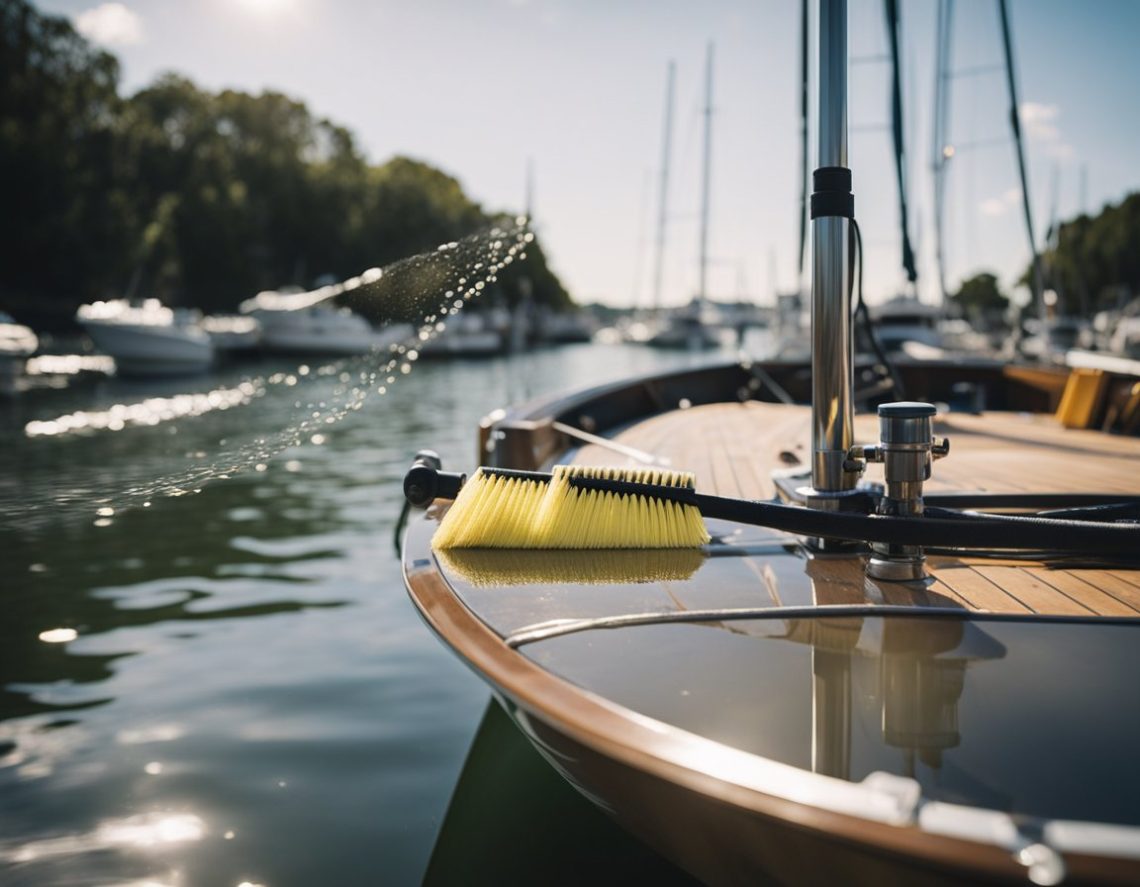
Best Time to Clean Your Boat to Stop the Spread of Aquatic Nuisance Species
Boating is a popular recreational activity enjoyed by millions of people each year. While boating can be a fun and relaxing way to spend time on the water, it can also have negative impacts on the environment if proper precautions are not taken. One of the biggest concerns facing boaters today is the spread of aquatic nuisance species (ANS). These invasive species can cause significant harm to local ecosystems and economies, and it is up to all of us to do our part to prevent their spread.
So, when is the best time to clean your boat to stop the spread of aquatic nuisance species? The answer is simple: every time you take your boat out of the water. Cleaning your boat after each use is the most effective way to prevent the spread of ANS. By removing any plants, animals, or mud that may be clinging to your boat or trailer, you can help ensure that you are not unintentionally transporting invasive species to new locations.
Understanding Aquatic Nuisance Species

Aquatic Nuisance Species (ANS) are non-native species that are introduced into an ecosystem and cause harm to the environment, economy, or human health. These species can be plants, animals, or microorganisms that are not naturally found in a particular body of water. ANS can cause harm by outcompeting native species, reducing water quality, and disrupting food webs.
Definition and Risks
ANS pose a significant risk to our waterways and ecosystems. They can be introduced through a variety of means, including ballast water from ships, fishing gear, and recreational boats. Once introduced, ANS can spread rapidly and cause significant damage to aquatic habitats. They can also harm the economy by reducing recreational opportunities and damaging infrastructure.
It’s important to understand the risks posed by ANS and take steps to prevent their spread. Prevention is the most effective way to manage ANS, as once they are established, it can be difficult or impossible to eradicate them. Prevention measures include cleaning boats and equipment, following local regulations, and reporting sightings of ANS.
Common Vectors for Spread
Recreational boats are a common vector for the spread of ANS. Boats can carry ANS in their ballast tanks, on their hulls, and in their fishing gear. ANS can also be spread through the release of live bait or the dumping of aquariums into waterways.
To prevent the spread of ANS, it’s important to clean boats and equipment thoroughly before moving them from one body of water to another. This includes removing all visible plants, animals, and mud, as well as draining all water from the boat and equipment. Boaters should also follow local regulations and avoid releasing live bait or dumping aquariums into waterways.
By understanding the risks posed by ANS and taking steps to prevent their spread, we can protect our waterways and ensure that they remain healthy and vibrant for generations to come.
Optimal Boat Cleaning Practices
Pre-Cleaning Considerations
Before cleaning your boat, consider the following pre-cleaning measures to ensure that you’re not spreading aquatic nuisance species:
- Remove all visible plants, animals, and mud from your boat, trailer, and other equipment.
- Drain all water from your boat and equipment. This includes live wells, bilges, and bait buckets.
- Dispose of all debris and bait in a trash can or dumpster, not in the water or on the shore.
- Rinse your boat and equipment with high-pressure, hot water (140°F or higher) for at least two minutes.
Cleaning Techniques
When cleaning your boat, follow these techniques to ensure that you’re effectively removing aquatic nuisance species:
- Use hot water (140°F or higher) to clean your boat and equipment.
- Use a stiff-bristled brush to scrub your boat and equipment, paying special attention to areas where aquatic nuisance species may be hiding, such as the propeller, anchor, and trailer.
- Use a commercial boat cleaner or a solution of one cup of bleach to ten gallons of water to clean your boat and equipment. Avoid using household cleaners, as they may harm aquatic life.
Post-Cleaning Measures
After cleaning your boat, take the following post-cleaning measures to ensure that you’re not spreading aquatic nuisance species:
- Drain all water from your boat and equipment before leaving the water access site.
- Dry your boat and equipment for at least five days before launching it in another body of water. If you can’t wait five days, rinse your boat and equipment with hot water (140°F or higher) before launching it in another body of water.
- Dispose of all debris and bait in a trash can or dumpster, not in the water or on the shore.
By following these optimal boat cleaning practices, we can all do our part to stop the spread of aquatic nuisance species and protect our waterways for future generations.




